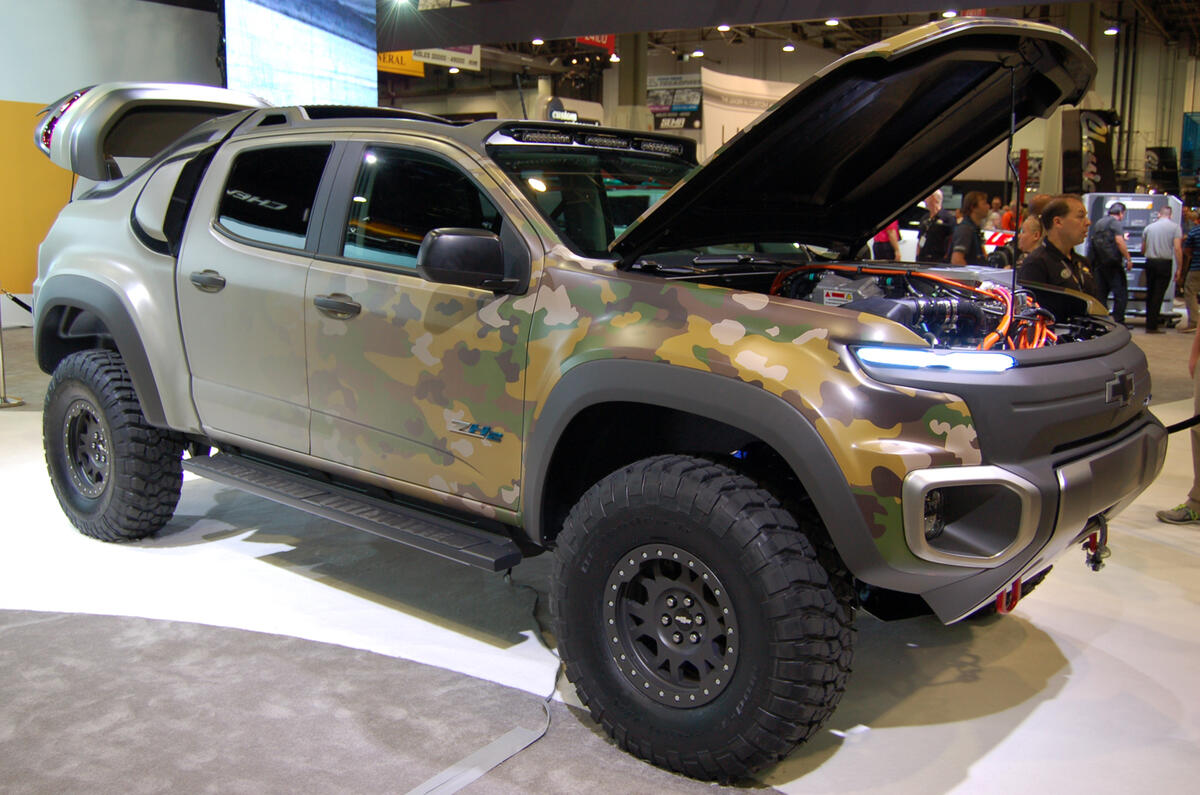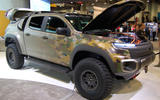The Chevrolet Colorado ZH2, a joint development between General Motors (GM) and the US Army’s TARDEC research unit, has been revealed at the SEMA show.
The two have collaborated to create the off-road fuel cell vehicle (FCV) for evaluation by US soldiers in 2017.
Read the rest of the SEMA news here
The Army has identified a number of potential benefits to fuel cell power, including near-silent operation, high wheel-torque at all speeds, and water as a by-product for field use.
The ZH2 is based on a Chevrolet Colorado pick-up truck, with a roll bar, different seats and six-point harnesses added to the crew cab. The bespoke rear end is made of Kevlar-reinforced carbonfibre. The fuel cell's components have been carried over from the Chevrolet Equinox FCV, of which a 120-strong test fleet has completed more than 3 million miles.
A range of around 120 miles is expected for the ZH2, with acceleration from 0-60mph in around 15sec.
Read about Hyundai's next fuel cell vehicle here
A notable feature is the boot-mounted Exportable Power Take-Off unit (EPTO), which transforms the ZH2 into a mobile generator. “Fuel cells are about 10 times as efficient as combustion engines at idle speeds,” explains Dr Joe Mercurio, manager of new business development for GM’s fuel cell activities. “When you park the vehicle, you can run the fuel cell to make around 300V of DC power, which the EPTO will convert to 120V or 240V AC. It’ll produce up to 25kW, enough to power a temporary army camp.”
Getting a supply of hydrogen to the field of operation would be key to ensuring an FCV’s usefulness to the military. Mercurio says that studies have been done on reforming the widely used JP8 jet fuel into hydrogen.
Graham Heeps
















Join the debate
Add your comment
Emm
xxxx wrote:
Compared to having to ask the enemy to stop the war for eight hours while they plug in and recharge. Then finding that daesh haven't bothered to wire up any sockets roadside and having to send somebody back to Swindon for a truckful of extension cables. Electric cars are going nowhere.
Kevlar-reinforced carbonfibre
Developing new cleaner power
Developing new products
There is little pooling of research resources for a very good reason, those investing the money want to keep the benefit for themselves.
There are already fuel cells for power generation in use by the Swedish army that run on diesel/ avtur.
They are very expensive but are quiet in operation, a benefit that has attracted the development of fuel cells powered by LPG for use in motor caravans. Again very expensive to buy but where noisy petrol generators are not allowed and there is no electric hook ups available they give an option to keep the caravan batteries topped up.
Fuel cells will always need hydrogen as their fuel but that can be made by reforming most fuels into hydrogen by steam reforming process.